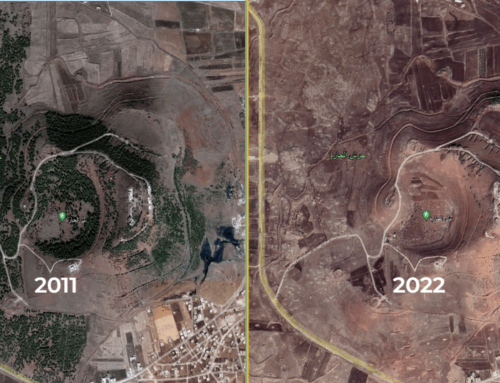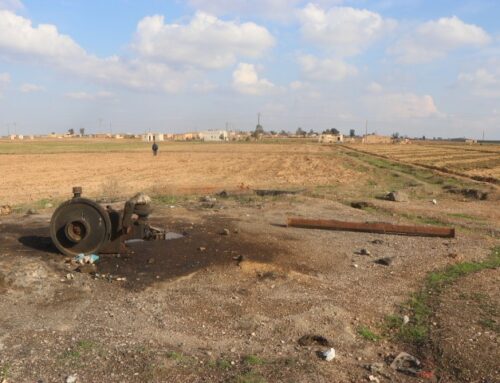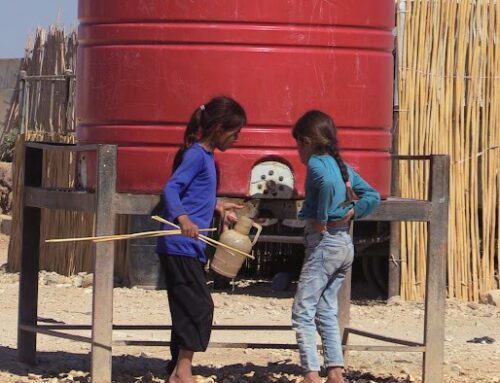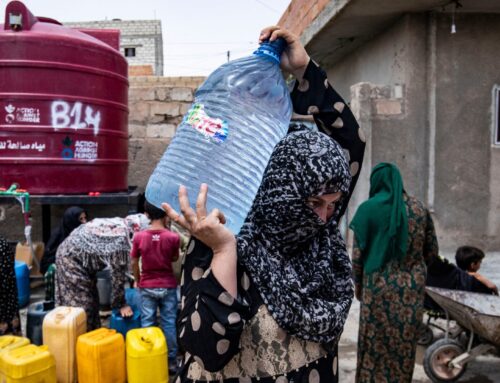Iran-Syria oil line: An impending environmental disaster in the Mediterranean?
A fire on an oil tanker off the coast of Syria is the latest incident in a series affecting Iran’s maritime supply line of crude oil to Syria. The Iran-Syria oil line represents a rising source of environmental risk for the entire region.
27 April 2021
AMMAN — A fire spotted aboard a loaded oil tanker stationed off the Syrian coast sparked fears of environmental disaster last Saturday, weeks after a large oil spill in the Eastern Mediterranean polluted the coasts of Syria, Israel and Lebanon.
“Honestly, it’s a miracle that WISDOM didn’t explode,” tweeted Samir Madani, the founder of TankersTrackers.com, a specialized website tracking shipments of crude oil. “She’s carrying at least 300,000 barrels of crude oil, which is more than what EXXON VALDEZ spilled. This could have devastated the [Eastern Mediterranean].”
The fire was eventually put out, averting a larger catastrophe, but three men lost their lives. The vessel involved is a Beirut-registered tanker carrying Iranian crude destined for the Syrian market.
It is not the first time that oil shipments headed for Syria awaken such fears. The incident is the latest in a series affecting Iran’s maritime supply line of crude oil to Syria, which represents a rising source of environmental risk for the entire region.
Intensifying clashes at sea between Iran and Israel
Oil shipments from Iran to Syria have allowed Iran to export oil and Syria to feed its domestic market despite crippling international sanctions. Once the top oil producer in the eastern Mediterranean region, Syria struggles with paralyzing fuel shortages in areas held by the regime, which has lost control over the country’s oil fields in the east.
Media were quick to link the fire to a suspected drone strike, with at least one TV channel blaming Israel. Since late 2019, Israel has targeted at least a dozen ships headed for Syria, and Iran has responded by attacking Israeli commercial ships in the Gulf of Oman.
These strikes often target oil tankers carrying crude to Syria’s Baniyas refinery, a centerpiece on the Iran-Syria maritime line where shipments are offloaded. Oil is stored and refined in Baniyas or sent by pipeline to a refinery in Homs.
However, on April 25, Syria and Iran denied the military nature of the incident, claiming the fire was caused by welding operations on the boat. This version was called into question by Madani.
“Who in their right mind decides to weld during a 300K barrel discharge operation aboard a fully laden tanker?,” Madani tweeted. “You’re not even allowed to strike a match or ignite cigarette lighter, according to the house rules in Syria.”
However, an Israeli drone strike against a loaded tanker seems unlikely given the associated risk of a massive spill, especially within close proximity to Israel’s own coast.
Sabotage against Iranian vessels has typically been carried out using limpet mines which are secretly placed on the ship’s hull and detonated at sea, causing light damage meant to immobilize the ship and create disturbances on the oil route.
The threat of ecological disaster
Whatever the cause of the latest incident may be, the Iran-Syria maritime oil line represents an impending threat on the region’s environment. In June 2019, the sabotage of underwater oil pipelines at Baniyas sparked a month-long oil spill that affected around 100 kilometers of Syria’s coast.
“There have now been three major incidents: the blown-up underwater pipelines at Baniyas off-shore mooring station in 2019, an alleged attack in July 2020, with a visible oil spill but the cause is unclear, and a large oil spill from a tanker in the Mediterranean Sea in 2021, that affected Israel’s, Lebanon’s and Syria’s coasts,” Wim Zwijnenburg, a Project Leader focusing on conflict and environment-related issues at the NGO PAX, told Syria Direct.
Israel accused Iran of being behind the latter incident, which polluted 90% of Israel’s coast in February and caused the largest ecological disaster in the country’s history, blaming the spill on a vessel carrying oil to Syria.
“We have also [identified] roughly a dozen of small spills directly from oil ships, likely [related to the] dumping of fuel oil or oil waste around the off-loading areas, but have not structurally monitored this, so the number could likely be higher,” Zwijnenburg added.
Spillages are likely to occur at various stages on the Iran-Syria oil line, often run on aged tankers. Further, transfers of oil between ships at sea commonly take place to avoid detection, increasing the risk of pollution.
Whether deliberate or accidental, oil spills off the Syrian coast could lead to lasting and irreversible damage on maritime life. Syria’s coastal areas are home to over 1,700 recorded maritime species.
A large spill “would likely shut off more delivery of both oil and other goods to Baniyas and the nearby ports,” Zwijnenburg added, aggravating Syria’s imports crisis with potential knock-on effects on the price and availability of essential items, including food.
Coastal communities would be directly affected, particularly fishermen. “In case of a large fire, noxious fumes from burning oil would also pose public health risks, while soot from the burning oil could settle on coastal agricultural areas and require clean-up,” Zwijenburg noted.
The prospect of large-scale ecological disaster in Syrian seas, linked to heightened risk of oil spills amidst Iranian-Israeli maritime escalations and pollution from illicit oil transfers, is increasingly likely.
The fallout “will likely be exacerbated by the fact that the war has impacted the Syrian government’s ability to respond and clean-up oil pollution,” Zwijnenburg stressed. In this context, Syrians and those first affected will likely have to draw on their own resources to deal with the consequences.







